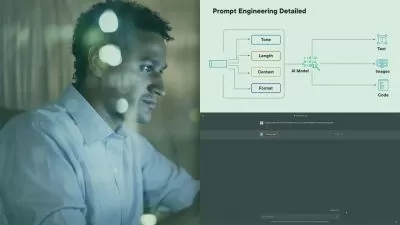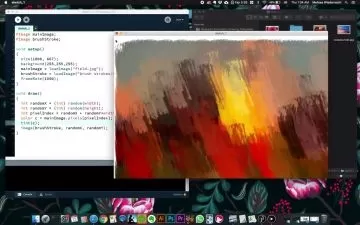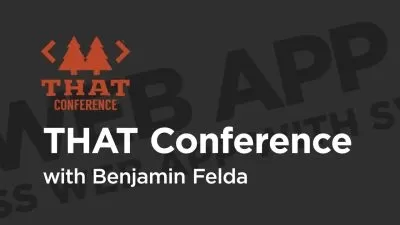An Introduction To Word Vectorization
Richard Aragon
37:26
Description
Word Vectorization Techniques for AI and LLM Models
What You'll Learn?
- What is Word Vectorization and Why Do We Need It?
- How to Evaluate and Visualize the Word Vectors, and How to Use Them for Various NLP Tasks?
- Frequency-Based Methods
- Prediction-Based Methods
Who is this for?
What You Need to Know?
More details
DescriptionWord Vectorization: Learn how to transform text into numerical vectors that can be used for various natural language processing (NLP) tasks. In this course, you will learn about the theory and practice of word vectorization, a technique that converts words into numerical vectors that capture some aspects of their meaning, usage, or context. You will learn about the different types of word vectorization methods, such as frequency-based and prediction-based methods, and how they differ in their assumptions, advantages, and disadvantages. You will also learn how to implement some of the word vectorization methods using Python and popular libraries, such as Gensim and TensorFlow, and how to use them for your own NLP projects. You will also learn how to evaluate and visualize the word vectors, and how to use them for various NLP tasks, such as sentiment analysis, text classification, and machine translation.
The course is divided into the following lectures:
Lecture 1: Introduction to Word Vectorization. In this lecture, you will learn about the basics of word vectorization, and why it is important for NLP. You will also learn about the two main categories of word vectorization methods: frequency-based and prediction-based methods, and how they work at a high level.
Lecture 2: Frequency-based Methods of Word Vectorization. In this lecture, you will learn about the frequency-based methods of word vectorization, such as one-hot encoding, count vectorizer, TF-IDF, and n-grams. You will see how they work, and what are their advantages and disadvantages. You will also learn how to implement them using Python and Gensim.
Lecture 3: Prediction-based Methods of Word Vectorization. In this lecture, you will learn about the prediction-based methods of word vectorization, such as word2vec, fastText, and GloVe. You will see how they work, and what are their advantages and disadvantages. You will also learn how to implement them using Python and TensorFlow.
Lecture 4: Evaluation and Visualization of Word Vectors. In this lecture, you will learn how to evaluate and visualize the word vectors, and how to use them for various NLP tasks. You will learn about the different evaluation methods, such as intrinsic and extrinsic evaluation, and the different dimensionality reduction techniques, such as PCA and t-SNE. You will also learn how to use the word vectors for sentiment analysis, text classification, and machine translation.
Who this course is for:
- This course is designed for anyone who wants an introduction and hands on walkthrough to word vectorization
Word Vectorization: Learn how to transform text into numerical vectors that can be used for various natural language processing (NLP) tasks. In this course, you will learn about the theory and practice of word vectorization, a technique that converts words into numerical vectors that capture some aspects of their meaning, usage, or context. You will learn about the different types of word vectorization methods, such as frequency-based and prediction-based methods, and how they differ in their assumptions, advantages, and disadvantages. You will also learn how to implement some of the word vectorization methods using Python and popular libraries, such as Gensim and TensorFlow, and how to use them for your own NLP projects. You will also learn how to evaluate and visualize the word vectors, and how to use them for various NLP tasks, such as sentiment analysis, text classification, and machine translation.
The course is divided into the following lectures:
Lecture 1: Introduction to Word Vectorization. In this lecture, you will learn about the basics of word vectorization, and why it is important for NLP. You will also learn about the two main categories of word vectorization methods: frequency-based and prediction-based methods, and how they work at a high level.
Lecture 2: Frequency-based Methods of Word Vectorization. In this lecture, you will learn about the frequency-based methods of word vectorization, such as one-hot encoding, count vectorizer, TF-IDF, and n-grams. You will see how they work, and what are their advantages and disadvantages. You will also learn how to implement them using Python and Gensim.
Lecture 3: Prediction-based Methods of Word Vectorization. In this lecture, you will learn about the prediction-based methods of word vectorization, such as word2vec, fastText, and GloVe. You will see how they work, and what are their advantages and disadvantages. You will also learn how to implement them using Python and TensorFlow.
Lecture 4: Evaluation and Visualization of Word Vectors. In this lecture, you will learn how to evaluate and visualize the word vectors, and how to use them for various NLP tasks. You will learn about the different evaluation methods, such as intrinsic and extrinsic evaluation, and the different dimensionality reduction techniques, such as PCA and t-SNE. You will also learn how to use the word vectors for sentiment analysis, text classification, and machine translation.
Who this course is for:
- This course is designed for anyone who wants an introduction and hands on walkthrough to word vectorization
User Reviews
Rating
Richard Aragon
Instructor's Courses
Udemy
View courses Udemy- language english
- Training sessions 5
- duration 37:26
- Release Date 2023/12/16



















